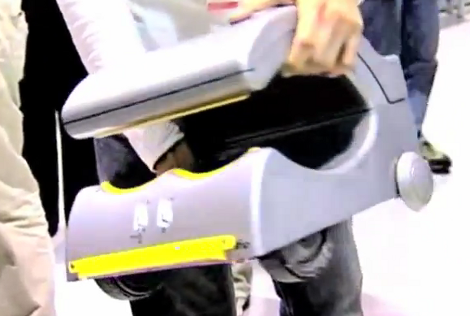
When it comes time to unwind at the Dyson design facility these engineers know how to do it right. Recently, the company challenged their engineers to a grown-up version of the Pinewood Derby in which they raced their own cars powered by a Dyson motor.
The video after the breaks shows a large collection of these time trials on a track made from upturned wooden pallets. Most of the vehicles are made from parts which we don’t recognize. But some of them are very familiar like our favorite hand dryer ever (seen above) and the iconic goldenrod manifold from the Dyson ball vacuum cleaner.
The course ends abruptly, as you can see in the last run of the video. There is one entry that included a human rider and he seems to be going nearly as fast as the riderless carriages are. The video cuts away before he hits the wall, but we can’t image he had the time to include brakes in that design.













